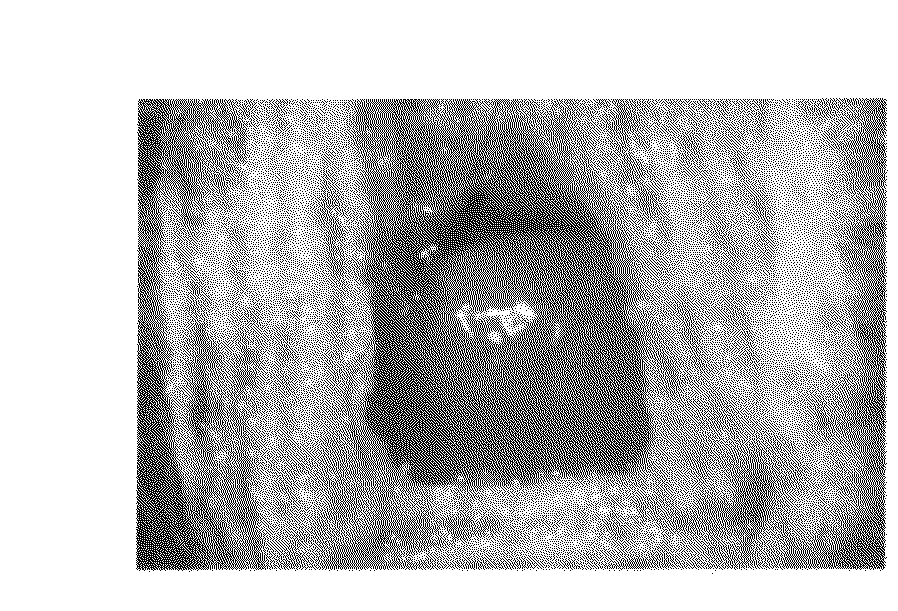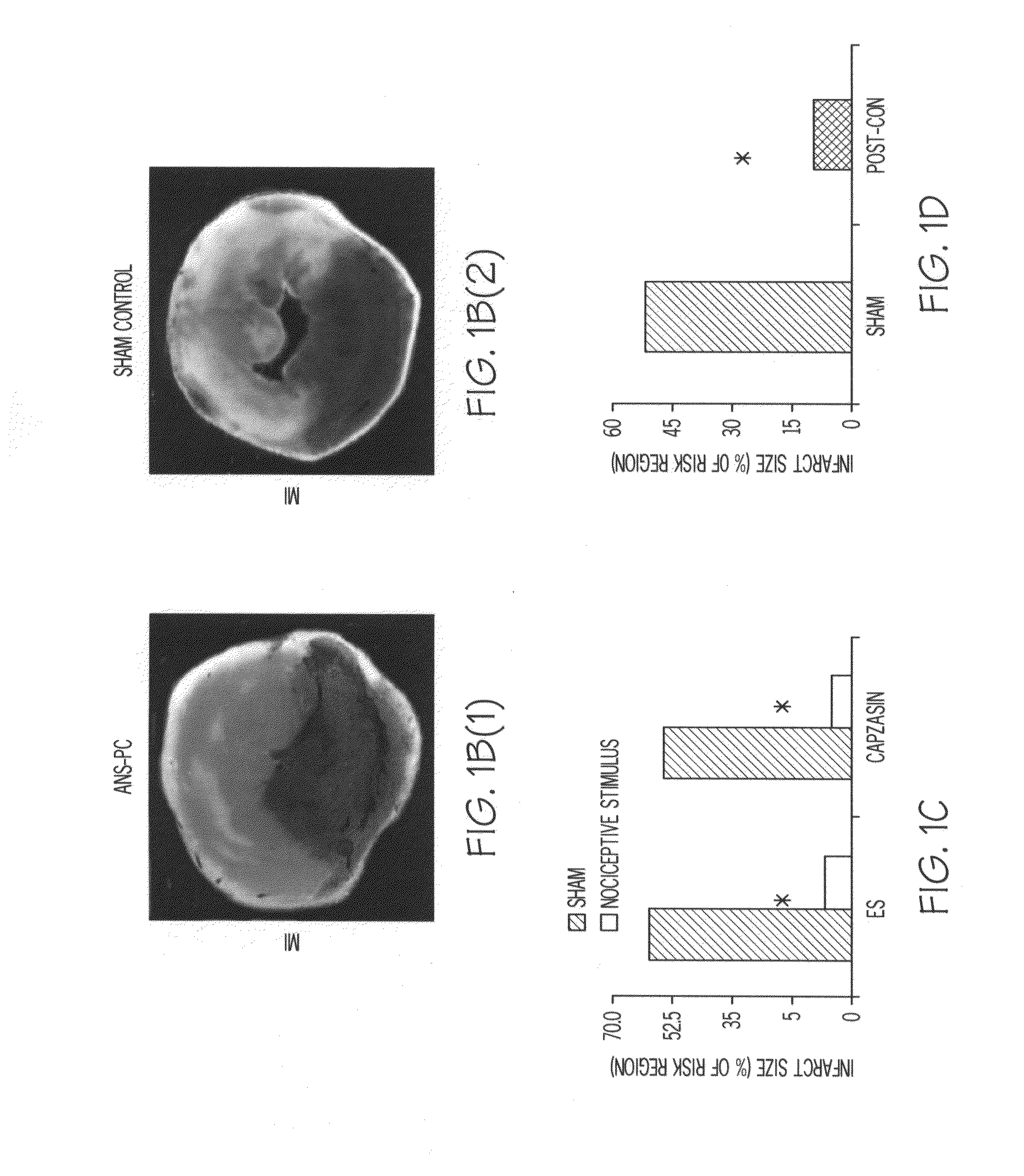Methods of preventing ischemic injury using peripheral nociceptive stimulation
a nociceptive stimulation and peripheral nociceptive technology, applied in the field of activation of trp, can solve the problems of subject is at risk for ischemia-related tissue damage to one or more tissues, and achieves the effect of preventing or reducing ischemia-related tissue damag
- Summary
- Abstract
- Description
- Claims
- Application Information
AI Technical Summary
Benefits of technology
Problems solved by technology
Method used
Image
Examples
example 1
Mice
[0108]Wild-type (B6129SF2 / J F2 and bradykinin 2 receptor knockout (BK2R KO) mice (B6129 SF2 / J F2, strain 101045) were obtained from Jackson Laboratories (Bar Harbor, Me.). Mice were maintained in accordance with institutional guidelines, the Guide for the Care and Use of Laboratory Animals (NIH, revised 1985) and the Position of the American Heart Association on Research Animal Use (1984). All groups of mice consisted of males and females distributed equally among groups; post-hoc analysis confirmed previous results that there were no gender related differences in these studies.
example 2
Mouse Model of Ischemia and Reperfusion
[0109]A previously described mouse model of ischemia and reperfusion (I / R) injury in vivo was used (Ren et al. (2004) J. Surg Res. 121(1):120-129; Fan et al (2005) Circulation 111(14):1792-1799; Zhou et al (2007) Cardiovascular Research 75(3) 487-497; and Diwan et al (2007) J. Clinical Investigation 117(10):2825-2833, herein incorporated by reference in their entirety). Mice were anesthetized with sodium pentobarbital (90 mg / kg ip), intubated with PE 90 tubing and ventilated using a mouse miniventilator (Harvard Apparatus, Holliston, Mass.). All mice were continuously monitored by electrocardiography (ECG) (DigiMed Sinus Rhythm Analyzer, Micro-Med Inc), and mice without evidence of ischemia and timely reperfusion were excluded from the studies.
[0110]A lateral thoracotomy (1.5 cm incision between the second and third ribs was performed to provide exposure of the left anterior descending coronary artery (LAD). Vascular bundles in the vicinity wer...
example 3
Infarct Size Determination and Imaging
[0111]Mice were euthanized either 4 or 24 hours after reperfusion and infarct size determination and imaging were performed by previously described methods (Ren et al. (2004) J. Surg Res. 121(1):120-129 and Guo et al (1998) Am J. Physiology 275 (4 Pt 2):H1375-1387, herein incorporated by reference in their entirety). Mice were anesthetized with pentobarbital sodium (35 mg / kg iv) and euthanized with an intravenous bolus of KCl. The heart was excised and perfused with Krebs-Henseleit solution through an aortic cannula (22 or 23-gauge needle) using a Langerdorff apparatus. To delineate infarcted from viable myocardium, the heart was then perfused with a 1% solution of 2,3,5-triphenyltetrazolium chloride (TTC) in phosphate buffer (pH 7.4, 37° C.) at a pressure of 60 mM Hg (approx. 3 ml over 3 min). To delineate the occluded-reperfused coronary vascular bed, the coronary artery was then tied at the site of the previous occlusion and the aortic root w...
PUM
| Property | Measurement | Unit |
|---|---|---|
| thickness | aaaaa | aaaaa |
| frequency | aaaaa | aaaaa |
| frequency | aaaaa | aaaaa |
Abstract
Description
Claims
Application Information
 Login to View More
Login to View More - R&D
- Intellectual Property
- Life Sciences
- Materials
- Tech Scout
- Unparalleled Data Quality
- Higher Quality Content
- 60% Fewer Hallucinations
Browse by: Latest US Patents, China's latest patents, Technical Efficacy Thesaurus, Application Domain, Technology Topic, Popular Technical Reports.
© 2025 PatSnap. All rights reserved.Legal|Privacy policy|Modern Slavery Act Transparency Statement|Sitemap|About US| Contact US: help@patsnap.com



